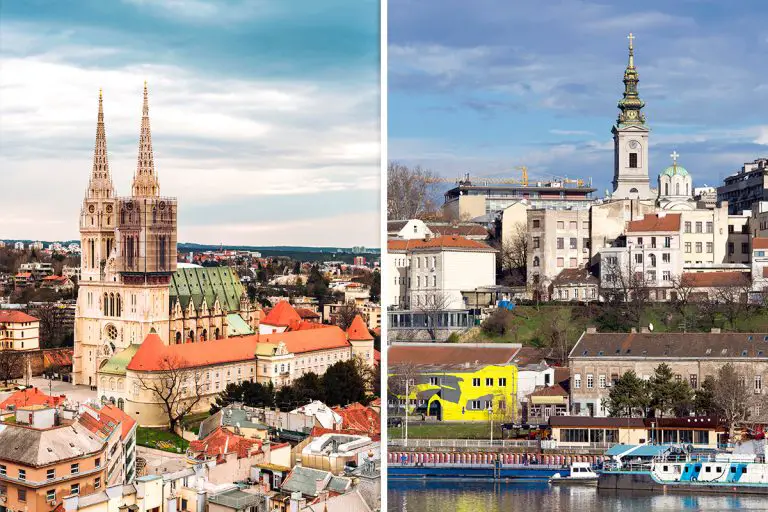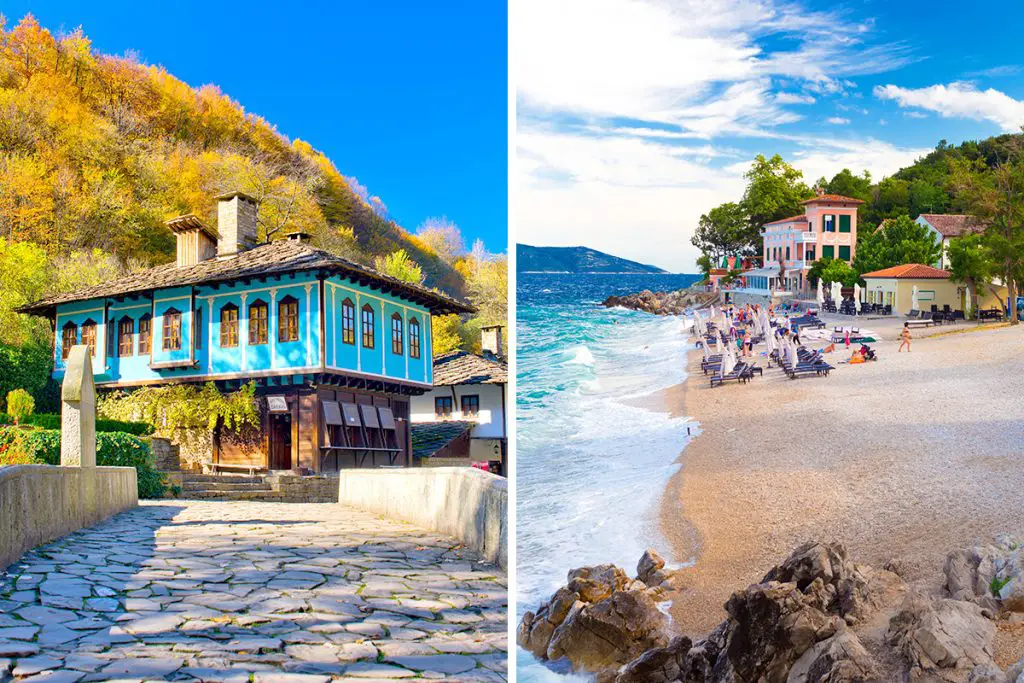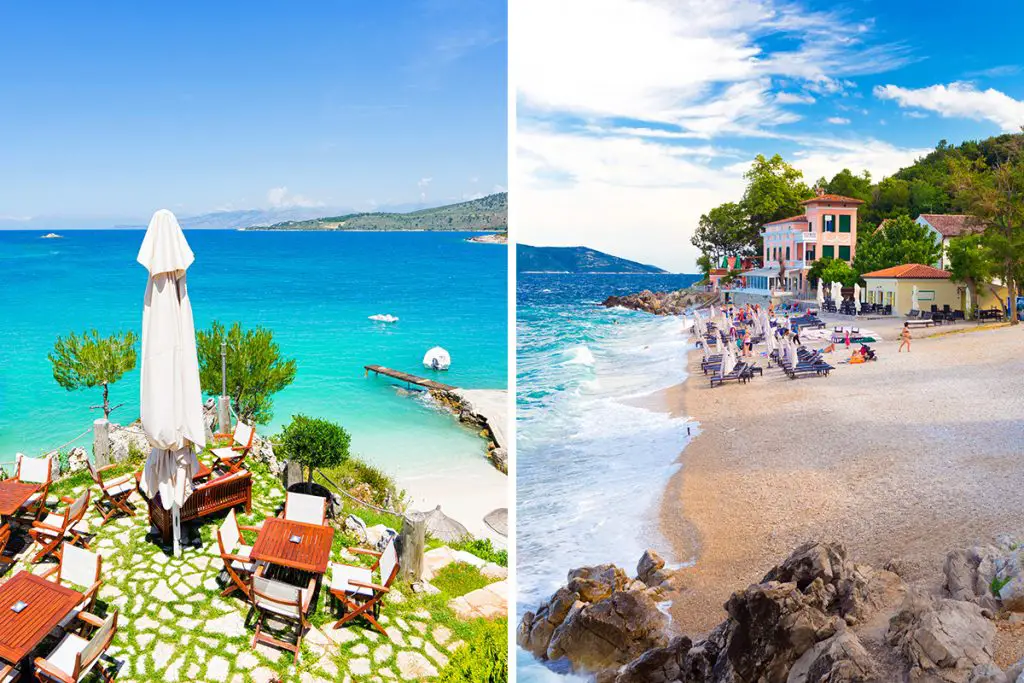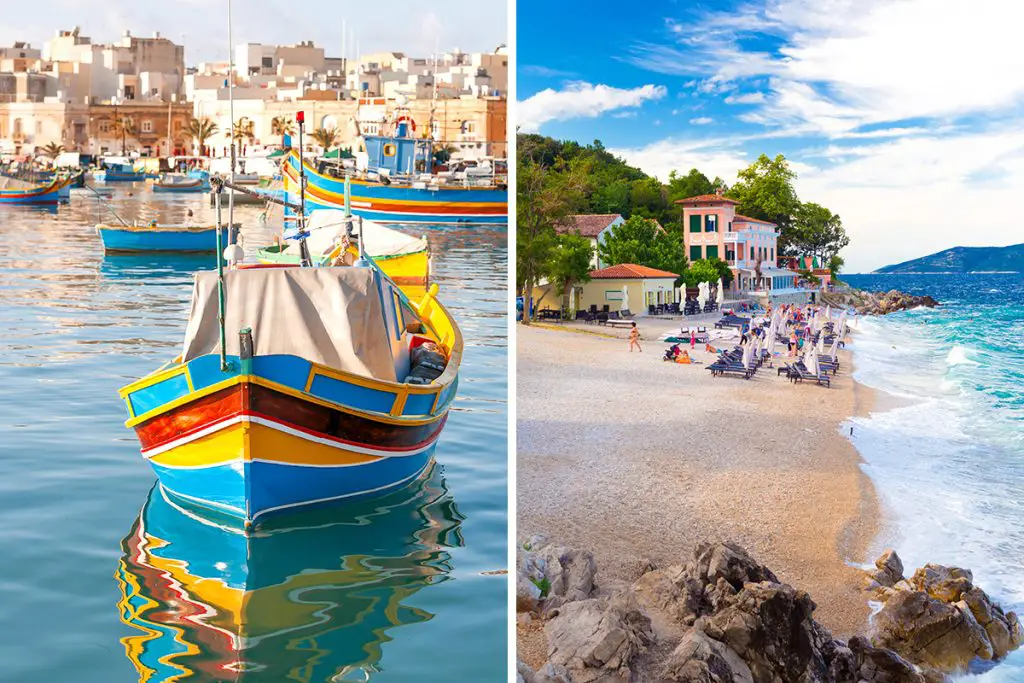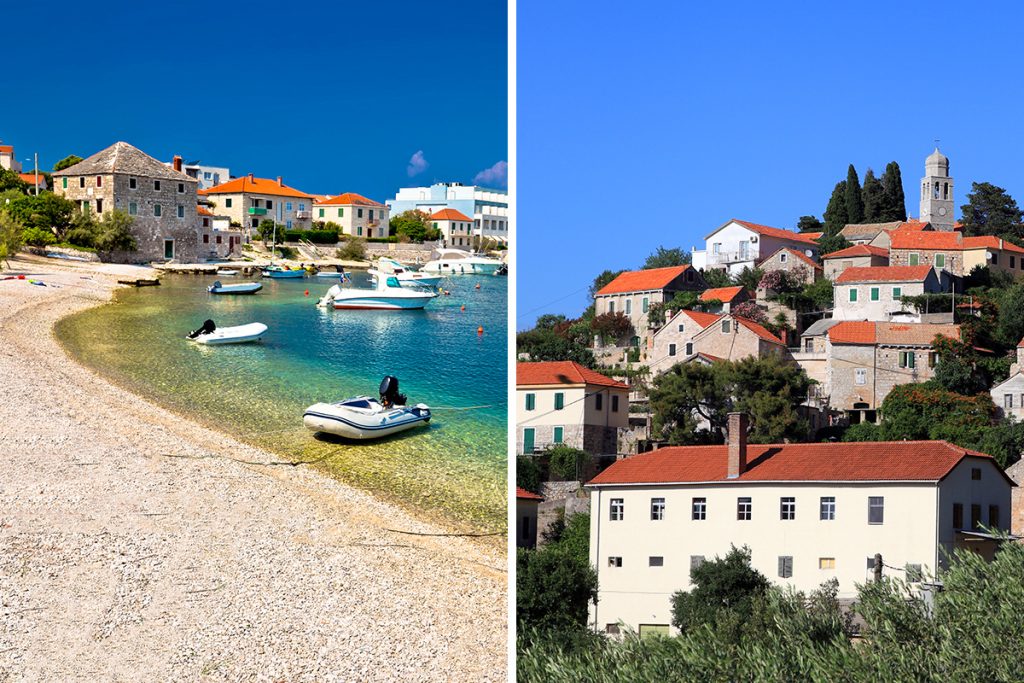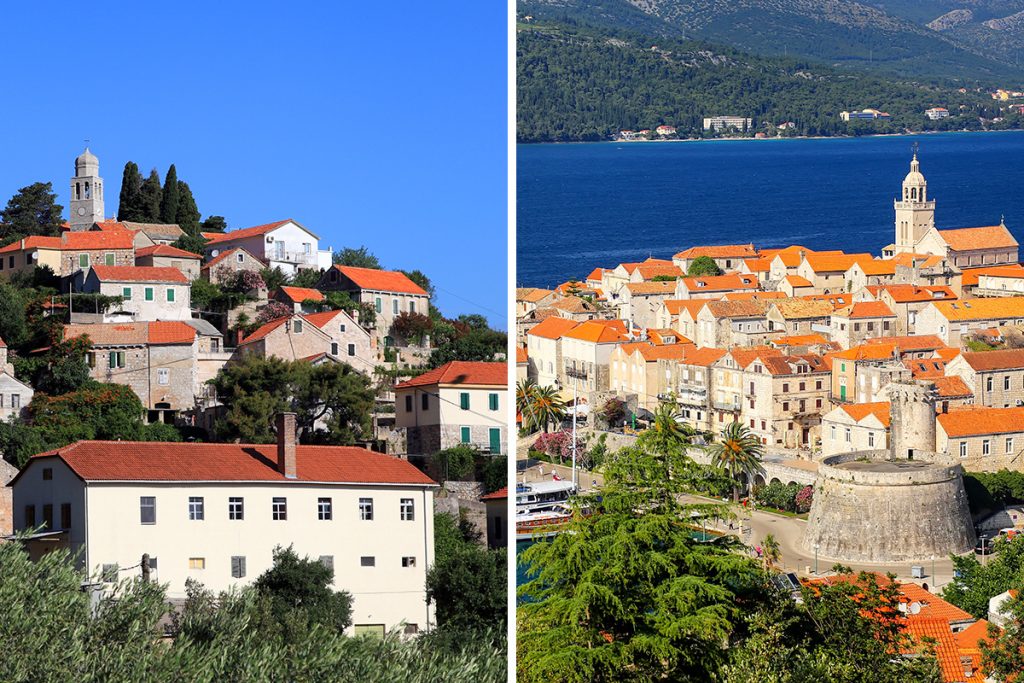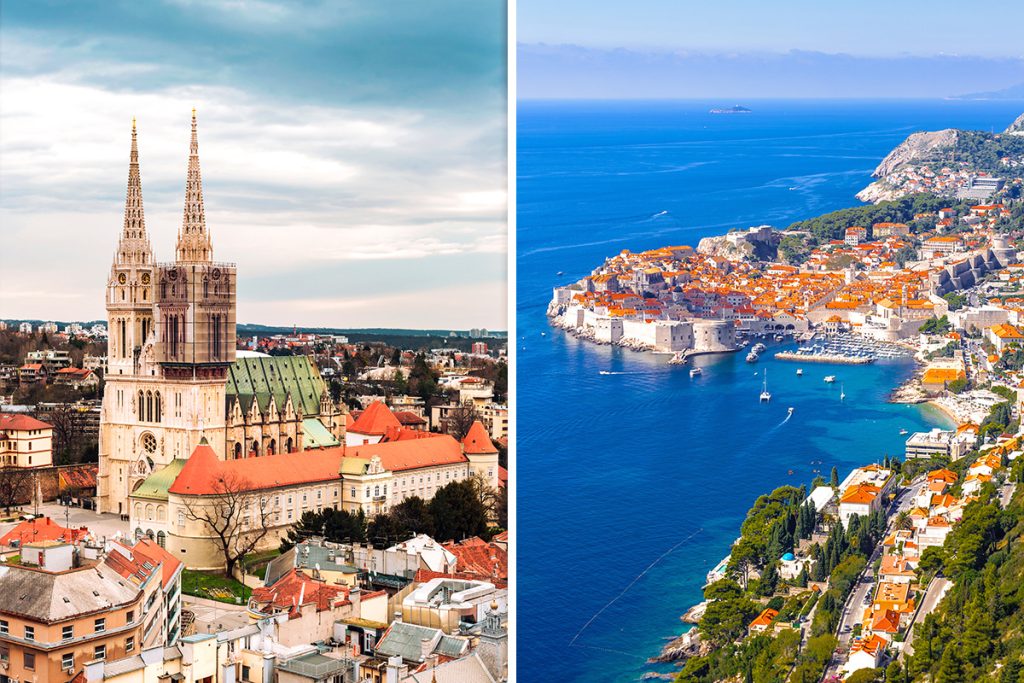The two cities beckon with their distinct qualities. Zagreb, with its beautiful squares and delightful museums, and Belgrade, boasting an exciting music scene and a striking fortress with panoramic views. So, how do you decide which city aligns more with your travel desires? Keep reading to discover the unique characteristics of both cities, to make your decision a little easier.
History & Culture
Choosing between Zagreb and Belgrade can feel like a tug-of-war between two different worlds. The two cities are rich tapestries of history and culture, each telling their own unique stories, steeped in centuries of change.
Zagreb’s history is a charming tale of old-world Europe. The city’s heart is divided into two main sections: the medieval Upper Town, and the 19th-century Lower Town.
The two areas showcase a blend of Austro-Hungarian architecture, punctuated with Gothic churches, medieval towers, and quaint cobbled streets. You can find stories of Zagreb’s history embedded in its beautifully preserved buildings and picturesque squares.
On the other hand, Belgrade, Serbia’s vibrant capital, carries an array of influences from both the East and the West. The city is like an open-air museum, displaying a blend of architectural styles, from Ottoman relics to socialist blocks.
Its star attraction, the Kalemegdan Fortress, encapsulates the city’s tumultuous history. This imposing fortress, overlooking the confluence of the Danube and Sava rivers, offers a poignant reminder of Belgrade’s strategic importance over the centuries.
But history and culture are not just about buildings and landmarks. The people and their traditions also play an integral part. Zagreb’s residents maintain their traditions with a laid-back lifestyle, where coffee breaks last hours, and weekends are for strolling around the city’s lively markets.
Belgrade, meanwhile, is a city that truly comes alive at night. Known for its music scene, especially the lively riverboat clubs, or “splavs”, it offers a culture that embraces life and celebration.
In conclusion, both Zagreb and Belgrade offer fascinating slices of history and vibrant cultures. The choice boils down to your personal preference: would you prefer Zagreb’s relaxed continental atmosphere or Belgrade’s eclectic blend of Eastern and Western influences? Both cities promise a wealth of experiences, rooted in their unique histories and cultures.
Attractions & Activities
As you embark on a journey to either Zagreb or Belgrade, the question of what to see and do in each city is likely on your mind. Here’s a peek into what awaits you in these vibrant European cities.
In Zagreb, the city’s Upper Town beckons with a treasure trove of attractions. The Stone Gate, the last remaining medieval town gate, is a must-visit. Gaze at its beautiful painting of the Virgin Mary, a symbol of the city. Visit St. Mark’s Church, known for its vibrant tiled roof that displays the city’s coat of arms.
Don’t miss out on the chance to explore the Museum of Broken Relationships. This unique museum displays sentimental objects from failed relationships, offering a unique perspective on love and loss.
Belgrade also boasts a range of unique attractions. You must visit the Belgrade Fortress in the heart of the city, where history and stunning views intertwine. Tour the fortress and immerse yourself in its rich past.
Then, head to the Nikola Tesla Museum, a tribute to the world-famous inventor. The museum showcases Tesla’s original inventions, personal effects, and interactive exhibits that demonstrate his pioneering technologies.
When it comes to activities, both cities shine in their own ways. If you’re in Zagreb, take a leisurely stroll through the Dolac Market, a lively outdoor market offering fresh local produce. Or, take a hike up Medvednica Mountain, located just north of the city. It’s a perfect day trip that rewards you with panoramic views of Zagreb.
In contrast, Belgrade offers a different kind of adventure. Take a boat tour on the Danube and Sava rivers for breathtaking views of the city. Or, explore the artistic side of Belgrade by visiting the Art District, filled with quirky street art and unique boutiques.
To sum it up, whether you choose Zagreb or Belgrade, both cities offer an array of attractions and activities that cater to a wide range of interests. It’s a question of whether you want to explore Zagreb’s charming architecture and marketplaces or dive into Belgrade’s rich history and vibrant art scene.
Eating, Drinking & Nightlife
Embarking on a culinary journey is an exciting part of traveling. In Zagreb and Belgrade, your taste buds are in for a treat with their diverse food scenes, unique drinks, and vibrant nightlife.
In Zagreb, the culinary scene is characterized by a mix of classic and contemporary. Be sure to try “strukli,” a rolled pastry with creamy cheese, a beloved local dish. For drinks, it’s hard to overlook Croatia’s rich wine culture. A visit to a local wine bar, where you can sample an array of Croatian wines, is a must-do.
Meanwhile, in Belgrade, food is a reflection of its diverse history. The must-try dish is “ćevapi,” small grilled sausages served with flatbread. Belgrade’s drink of choice is rakia, a potent fruit brandy that comes in various flavors. It’s a drink that embodies the city’s spirit.
When night falls, both cities reveal a different side. Zagreb’s nightlife is a mix of chic cocktail bars and late-night dance clubs. Head to Tkalciceva Street, known for its thriving bar scene, where you can dance the night away.
Belgrade, however, is famous for its “splavovi” or river barges converted into nightclubs. These floating clubs along the Sava and Danube rivers offer a unique party experience with music that ranges from Balkan turbo-folk to international tunes.
Whether you choose Zagreb or Belgrade, you’re in for a diverse culinary adventure, unique local drinks, and an exciting nightlife. The choice hinges on your preferences, whether you lean towards Zagreb’s mix of classic and contemporary or Belgrade’s diverse history reflected in its food and nightlife.
Shopping
For you, shopping might be an essential part of any city break. Both Zagreb and Belgrade offer unique shopping experiences that cater to various tastes.
Zagreb is known for its charming boutiques and designer stores. Head to Ilica Street, the city’s main shopping strip, where you’ll find everything from global brands to local designers. Don’t miss the Dolac Market for fresh local produce and handmade souvenirs.
Belgrade, on the other hand, offers a different shopping vibe. Knez Mihailova Street is a pedestrian zone filled with shops ranging from high-end to local Serbian brands. For a unique shopping experience, visit the Zeleni Venac Market, where you can buy fresh produce and experience the local culture.
To sum it up, shopping in either Zagreb or Belgrade offers its own unique charm. Whether you prefer the boutique-style shopping in Zagreb or the blend of high-end and local markets in Belgrade, both cities cater to every shopper’s needs. The decision is yours: Which city’s shopping scene appeals to you the most?
Accommodation
Picking the perfect place to stay can turn a good vacation into a great one. So, when you’re deciding between Zagreb and Belgrade, what kind of accommodation can you expect?
In Zagreb, there’s something for everyone. High-end hotels dot the city center, offering top-notch amenities for your comfort. But if you’re on a budget, no worries. You’ll find plenty of affordable hostels and apartments, especially around the main square, Ban Jelačić.
Belgrade, on the other hand, is known for its trendy boutique hotels. These unique places add a touch of charm to your stay. But just like Zagreb, Belgrade also offers a range of hostels and budget hotels, many located around Republic Square.
As for apartments, both cities have an abundance of options. These could be a great choice if you’re planning a longer stay and want a homey feel.
To wrap it up, whether you’re looking for a luxury hotel, a budget-friendly hostel, or a comfortable apartment, both Zagreb and Belgrade have plenty to offer. Your perfect accommodation is just a click away!
Family-Friendliness & Children’s Activities
Are you planning a family trip? Let’s explore what Zagreb and Belgrade offer when it comes to family-friendliness and children’s activities.
Zagreb has a bunch of family-friendly attractions. Take your kids to the Zagreb Zoo or the Technical Museum. If your family enjoys being outdoors, Maksimir Park is a great spot for a picnic and a fun afternoon.
Belgrade also has a variety of child-friendly attractions. Kalemegdan Park and Zoo is a favorite among families. The Ada Ciganlija island, with its beaches and sports facilities, also offers fun for the whole family.
Both cities offer various workshops and events geared towards children, especially during summer. Make sure to check local calendars during your visit.
In short, both Zagreb and Belgrade are cities where your kids will never get bored. With a variety of zoos, parks, and family-friendly activities, the challenge will be choosing what to do first!
Getting There & Getting Around
So, how do you get to Zagreb and Belgrade, and how easy is it to navigate these cities?
To reach Zagreb, your best bet is to fly into Zagreb International Airport, located about 10 miles (16 kilometers) from the city center. Direct flights connect Zagreb with many European cities.
Belgrade, similarly, is served by Belgrade Nikola Tesla Airport. It’s about 11 miles (18 kilometers) west of the city, with good connections to cities in Europe and the Middle East.
Once you’re in either city, getting around is easy. Both cities boast comprehensive public transportation systems, including buses, trams, and in Belgrade, a metro system.
Taxis and ride-sharing services are also widely available in both cities. If you prefer to walk, both city centers are compact and pedestrian-friendly.
In conclusion, getting to and around both Zagreb and Belgrade is relatively straightforward. Whether you choose public transport, taxis, or your own two feet, exploring these cities is part of the adventure. Pack your bags and get ready to start exploring!
Weather
When planning a trip, the weather can make or break your experience. So, what’s the weather like in Zagreb and Belgrade?
In Zagreb, you’ll experience a mix of a continental and maritime climate. Winters can get quite chilly, with temperatures falling to about 32°F (0°C). Snow is common. In contrast, summers are generally warm and pleasant, with temperatures rising up to 80°F (27°C).
Belgrade, on the other hand, enjoys a humid subtropical climate. Winters are slightly milder than in Zagreb, with average temperatures around 36°F (2°C). Summer temperatures tend to be higher, often reaching 85°F (29°C).
Both cities experience rainfall throughout the year, but neither tends to have long periods of continuous rain.
So, whether you’re a fan of snow or you’re chasing the sun, both Zagreb and Belgrade have unique weather characteristics. Just pack according to the season, and you’ll enjoy your time in either city.
Safety
Safety is another key factor to consider when choosing your travel destination. Let’s see how Zagreb and Belgrade compare.
Both Zagreb and Belgrade are generally considered safe cities for tourists. In Zagreb, like in any major city, it’s important to be aware of your surroundings, especially in crowded places.
Belgrade is known for its welcoming and friendly locals. The city has a lower crime rate compared to many European capitals, but again, it’s wise to take the usual precautions.
Another aspect of safety is road safety. Both cities have reliable public transport systems, and traffic rules are generally followed.
To sum it up, while no city can be 100% safe, both Zagreb and Belgrade make considerable efforts to ensure the safety of locals and visitors alike. Just remember the golden rule: stay alert and mindful of your surroundings.
Cost
Traveling can be costly, so it’s important to understand what kind of budget you’ll need in Zagreb and Belgrade.
Zagreb, like much of Croatia, uses the Croatian Kuna. Eating out in Zagreb can cost you around 80 Kuna (around $12), and a coffee will set you back about 10 Kuna (about $1.50).
In Belgrade, the currency is the Serbian Dinar. A meal in Belgrade might cost you about 800 Dinar (around $8), and a cup of coffee is approximately 150 Dinar (about $1.50).
Accommodation costs are similar in both cities, with a wide range of options to suit various budgets.
In conclusion, both Zagreb and Belgrade offer good value for your money. Whichever city you choose, you’ll find options that suit your budget and preferences.
Which Is Better – Zagreb or Belgrade?
As we come to the end of this comparison, it’s clear that both Zagreb and Belgrade are vibrant cities, each offering unique experiences. However, depending on your preferences, one may hold more appeal than the other.
Considering history and culture, both cities have intriguing pasts and diverse cultural scenes. If you’re keen on stepping back in time and exploring the blend of different eras, both cities have lots to offer. Yet, Zagreb, with its captivating medieval old town and charming Austro-Hungarian architecture, might be slightly more enchanting.
When it comes to attractions and activities, it depends on your interests. Are you an art lover, or do you prefer bustling markets and scenic parks? While both cities have their share of museums, art galleries, and parks, Belgrade’s vibrant street art scene might catch the eye of those seeking a more modern vibe.
If you’re a beach lover, neither Zagreb nor Belgrade will fulfill your dream of a beach getaway. Yet, their geographical location offers different natural beauty. If you enjoy exploring nearby nature parks or mountains, Zagreb could be your choice.
For the foodies, the night owls, and the shopaholics, both cities promise an exciting culinary scene, vibrant nightlife, and diverse shopping opportunities. Belgrade’s nightlife, known for its floating river clubs or ‘splavovi’, can offer a unique experience.
Regarding accommodation and transport, both cities cater well to tourists. They offer a wide range of accommodation options and reliable public transport. Yet, if your budget is tight, Belgrade’s lower cost of living might make your travel dollars stretch further.
Lastly, when it comes to safety, weather, and family-friendliness, there isn’t a clear winner. Both cities are generally safe, have different yet pleasant climates, and offer various activities for children. It ultimately comes down to your personal preferences and needs.
In conclusion, choosing between Zagreb and Belgrade is not a matter of better or worse – it’s about what suits your travel style and interests the most. Whether you’re drawn to the medieval charm of Zagreb or the artistic vibrancy of Belgrade, you’re bound to have a memorable trip!

